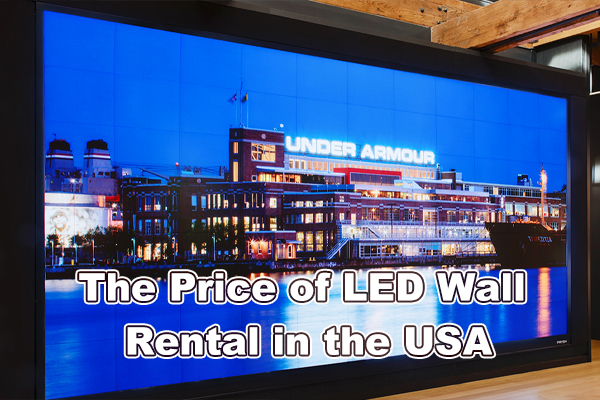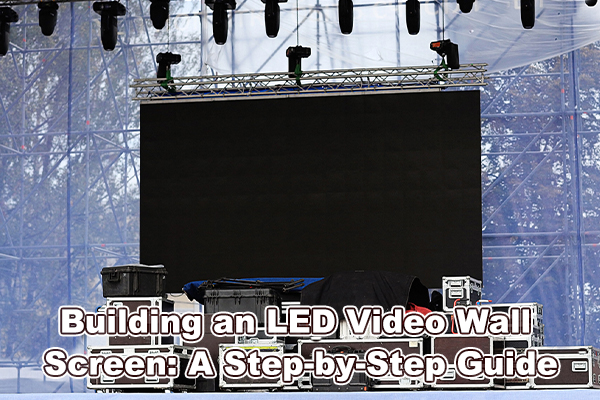In today’s fast-paced digital landscape, video walls have become a ubiquitous sight in various settings, ranging from corporate boardrooms and control centers to retail stores and entertainment venues. These large-scale displays serve as powerful tools for conveying information, creating immersive experiences, and capturing the attention of audiences. When it comes to video walls, two dominant technologies are often compared: LED and LCD. Each has its own strengths and weaknesses, making the choice between them a critical decision. In this article, we will explore the differences between LED and LCD video wall technology to help you determine which one is right for your specific needs.
Understanding the Basics
Before diving into the comparative analysis, let’s get a brief overview of LED and LCD technology in the context of video walls:
1. LED (Light Emitting Diode) Video Walls
LED video walls are comprised of individual LED modules that emit light. These modules come in various sizes and can be arranged in a grid to form a seamless video wall. LEDs are known for their vibrant colors, high brightness, and excellent contrast ratios. They are energy-efficient and have a longer lifespan than LCD displays. LED video walls can be used for both indoor and outdoor applications, making them versatile for a range of scenarios.
2. LCD (Liquid Crystal Display) Video Walls
LCD video walls, on the other hand, utilize liquid crystal technology to control the passage of light through each pixel. These displays are backlit by fluorescent lamps or LEDs. LCDs are renowned for their sharp image quality, wide viewing angles, and suitability for indoor use. They are available in various sizes, including ultra-narrow bezel options for creating seamless video walls.
Comparing the Two Technologies
Now, let’s compare LED and LCD video wall technology across various aspects to help you make an informed decision:
1. Image Quality
LED: LED video walls offer excellent image quality with vibrant colors, high contrast ratios, and the ability to achieve true blacks. They are particularly well-suited for applications where color accuracy and visual impact are crucial.
LCD: LCD video walls also provide high-quality visuals with sharp text and images. They have wide viewing angles and are ideal for applications where precise image detail is a priority.
2. Brightness and Visibility
LED: LED video walls are exceptionally bright and can be used in both well-lit indoor spaces and outdoor environments. They are visible even in direct sunlight, making them ideal for outdoor advertising and large outdoor displays.
LCD: LCDs offer good visibility indoors but may struggle in direct sunlight due to lower brightness levels. They are best suited for indoor environments with controlled lighting.
3. Energy Efficiency
LED: LED technology is highly energy-efficient, resulting in lower power consumption compared to LCDs. Over time, this can lead to cost savings in energy bills.
LCD: LCDs consume more power than LEDs, making them less energy-efficient. However, advancements in LCD technology have improved energy efficiency in recent years.
4. Longevity
LED: LED video walls have a longer lifespan compared to LCDs, often lasting up to 100,000 hours. This longevity minimizes the need for frequent replacements and maintenance.
LCD: LCD video walls have a shorter lifespan, typically around 50,000 hours. While this is still a considerable lifespan, it may require more frequent replacements in some applications.
5. Size and Installation
LED: LED modules can be easily customized to fit a wide range of sizes and shapes, making them versatile for various applications. Their slim profile and lightweight design simplify installation.
LCD: LCD video walls are available in various sizes, but they may have bezels (the frame around the screen) that can affect the overall visual appearance. Ultra-narrow bezel options are available to minimize this issue.
6. Cost
LED: LED video walls can have a higher initial cost, but the long-term cost of ownership may be lower due to energy efficiency and longer lifespan.
LCD: LCD video walls typically have a lower upfront cost, but their higher energy consumption and shorter lifespan can result in higher total cost of ownership over time.
Choosing the Right Technology for Your Needs
Ultimately, the choice between LED and LCD video wall technology depends on your specific requirements and budget. Here are some scenarios where one technology might be more suitable than the other:
LED Video Walls are a better choice when:
High brightness and visibility are essential, especially in outdoor settings.
You need a long-lasting display for minimal maintenance.
Color accuracy and vibrant visuals are crucial for your application.
LCD Video Walls are a better choice when:
You are operating in a controlled indoor environment with consistent lighting conditions.
Precise image detail and wide viewing angles are a priority.
Initial cost is a significant concern.
In conclusion, both LED and LCD video wall technologies have their own unique advantages and limitations. The decision ultimately depends on the specific requirements of your application, your budget, and your long-term goals. Before making a choice, it’s advisable to consult with experts in the field to ensure that the technology you select aligns with your objectives and provides the best possible visual experience for your audience.
Post time: Oct-31-2023














